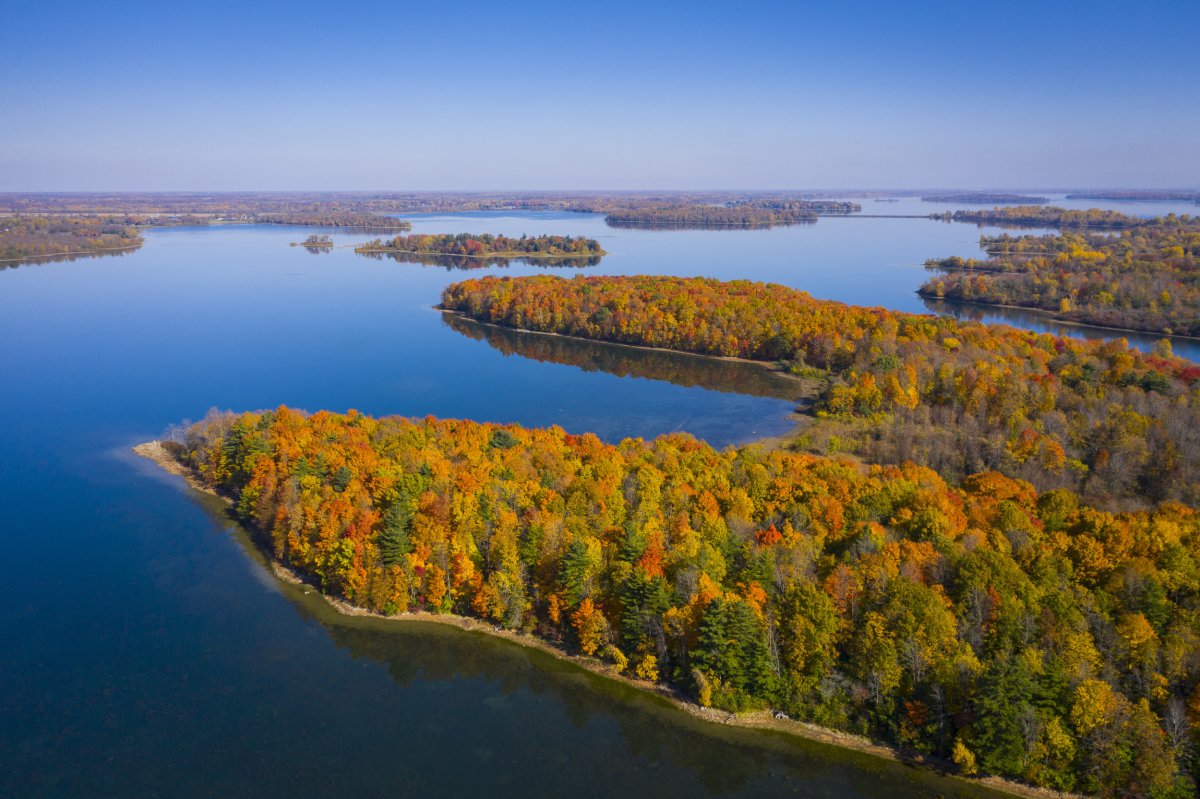Medicinal drugs polluting the St. Lawrence River are threatening aquatic wildlife, a new study has found.
The river flows from Canada's Lake Ontario all the way to the Gulf of St. Lawrence, connecting the U.S. Great Lakes to the North Atlantic. The new study, published in ScienceDirect from researchers at the University of Montreal, found concerning levels of pharmaceutical pollution in its waters, mainly in its flows near urban areas.
The results came after doctoral student Marc-Antoine Vaudreuil, alongside environmental chemist and professor in the university's Department of Chemistry Sébastien Sauvé, took water samples along a 400-mile stretch of the river between 2017 to 2021.

They discovered four medicinal compounds in such high quantities that there is the potential to seriously affect marine life. The compounds found were caffeine, carbamazepine, diclofenac and ibuprofen.
These substances could seriously harm all organisms living in the river, not just directly, but by disrupting their food webs and their reproduction.
"Freshwater aquatic organisms living near important wastewater rejection points are more likely to be impacted by pharmaceutical pollutants," Vaudreuil told Newsweek. "These could be different species of fish, Northern pike, or mussels for example. Some analgesics concentrations are also above European environment quality standards to protect predatory birds that feed from aquatic wildlife."
The river is home to many species, including fish and birds of prey that hunt around the area. Whales have even been known to frequent certain estuaries. All of this wildlife is highly sensitive to water pollution.
"Some concentrations exceeded toxicity thresholds for long-term exposure in aquatic life, but for most pharmaceutical compounds, there are currently no Canadian environmental standards," Vaudreuil said in a summary detailing the study's findings. "With the exception of carbamazepine, most of the compounds do not cause immediate harm, because they degrade fairly rapidly. However, it appears that chronic exposure can be very toxic, especially to organisms in the early stages of growth, such as newly hatched fish."
Research showed that the water downstream from Montreal had much higher levels of these medicines than other areas of the river. Throughout the study, Vaudreuil found it reached as far as Lac Saint-Pierre in Québec.
Pharmaceuticals end up in river water as they do not metabolize in the body when we take them. This means they can end up flowing through wastewater and entering sewage treatment plants, according to the U.S. Geological Survey.
"The use of pharmaceutical compounds results in the release of unaltered drugs and metabolites to urban wastewater via excretion or inappropriate disposal of drugs," Vaudreuil said. "These compounds are then partially eliminated by wastewater treatment plants, but their removal varies depending on the type of treatment. Classical wastewater treatment technologies were not developed to remove these specific organic pollutants and elimination efficiency is sometimes low or null for pharmaceuticals, resulting in the contamination of receiving surface waters."
This sort of contamination can also contribute to antibiotic resistance, the study reported.
"It's amazing that there are still traces so far from Montreal," Sauvé said in a report on the study. "We would expect more contamination in the immediate vicinity of the island given that the city has a population of 2 million and only one wastewater treatment plant to treat 900 billion liters of water per year."
The main problem is that there are no technologies that remove these substances from the water. Although there are currently initiatives in place, with Montreal working on a system that will remove a large amount of medicines from the water, Sauvé said this is a "double aged sword."
"The system has to be properly designed because ozone transforms pharmaceutical waste into even more toxic compounds. So you need enough ozone to eliminate these new molecules, too."
Other than implementing technologies to remove these drugs, everyone at home can also be mindful about using the pharmaceuticals in every day life.
"We also have to remember that the pharmaceutical compounds in wastewater come from the medications we all take," said Sauvé. "So it is important to use them wisely."
Update 02/02/24, 03:08 a.m. ET: This article has been updated to include additional comment from Vaudreuil.
Do you have a tip on a science story that Newsweek should be covering? Do you have a question about the St Lawrence River? Let us know via science@newsweek.com.
Uncommon Knowledge
Newsweek is committed to challenging conventional wisdom and finding connections in the search for common ground.
Newsweek is committed to challenging conventional wisdom and finding connections in the search for common ground.
About the writer
Robyn White is a Newsweek Nature Reporter based in London, UK. Her focus is reporting on wildlife, science and the ... Read more
To read how Newsweek uses AI as a newsroom tool, Click here.





